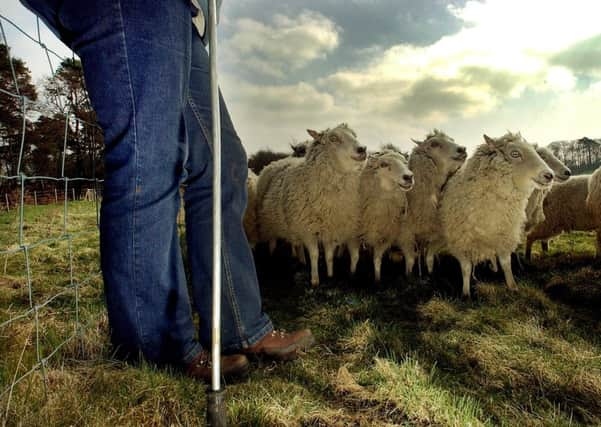Farming: Miller’s stark warning on reform


That was the stark message from NFU Scotland in advance of today’s Scottish Parliament debate on the issue.
In a letter to cabinet secretary Richard Lochhead, the union yesterday outlined four key proposals based on the feedback from meetings around the country, attended by more than 1500 farmers.
The priorities highlighted by the union were:
Advertisement
Hide AdAdvertisement
Hide Ad• focusing available support only on active farmers and actively farmed land
• increasing the number of payment regions in the rough grazing area
• a managed approach to the transition of existing businesses from historic to area payments using a “Scottish tunnel”
• refocusing limited rural development funds towards measures that would create more efficient farm businesses.
With many farmers now having calculated how the proposals will affect them, NFU Scotland president Nigel Miller said that it had become clear that the current proposals failed to provide a viable support framework for a significant part of Scottish farming.
“The consultation is nearing a close,” he said. “It is important that in the remaining days we step up efforts to develop a package that is tuned to Scottish farming and protects our ability to produce.
“Firstly, focusing support only on active farmers and actively farmed land is fundamental to the responsible use of public money and key to optimising area support levels in Scotland.”
He said that it appeared the so-called Scottish clause had been rendered useless after the use of stocking densities had been disallowed and proposed an alternative suite of measures.
Advertisement
Hide AdAdvertisement
Hide AdAmongst these measures was a more aggressive negative list, economic tests to define agricultural activity and limiting the allocation of new entitlements in 2015 to the number claimed in 2013 – alongside a robust national reserve to cater for genuine expansion over the period.
He said that the single area payment approach to the rough grazing region was “fundamentally flawed” and threatened production, communities and infrastructure in many areas.
“Any single payment rate is inevitably going to over-compensate very low intensity areas,” he said. “In stark contrast, the more intensively stocked hills will be subject to heavy cuts in support that are likely to trigger accelerated de-stocking.”
He said that at least two payment regions in Scotland’s hills were required to better target support as heavily stocked rough grazing farms currently faced losses of well over 50 per cent of support:
“These productive units must have access to an appeal system to allow land to be re classified as permanent pasture where appropriate,” he added.
Miller said that management of the transition to area payments was also crucial: “The Scottish Government’s proposed transition plan will push many established productive farm businesses over a cliff to area-based payments in 2019, and without a safety net.”
He proposed that a “Scottish tunnel”, similar to that being adopted by the Irish government, would see the transition managed and the cliff-edge avoided:
“To ignore this more managed approach is not about fairness,” said Miller, “it would be an abdication of responsibility.”